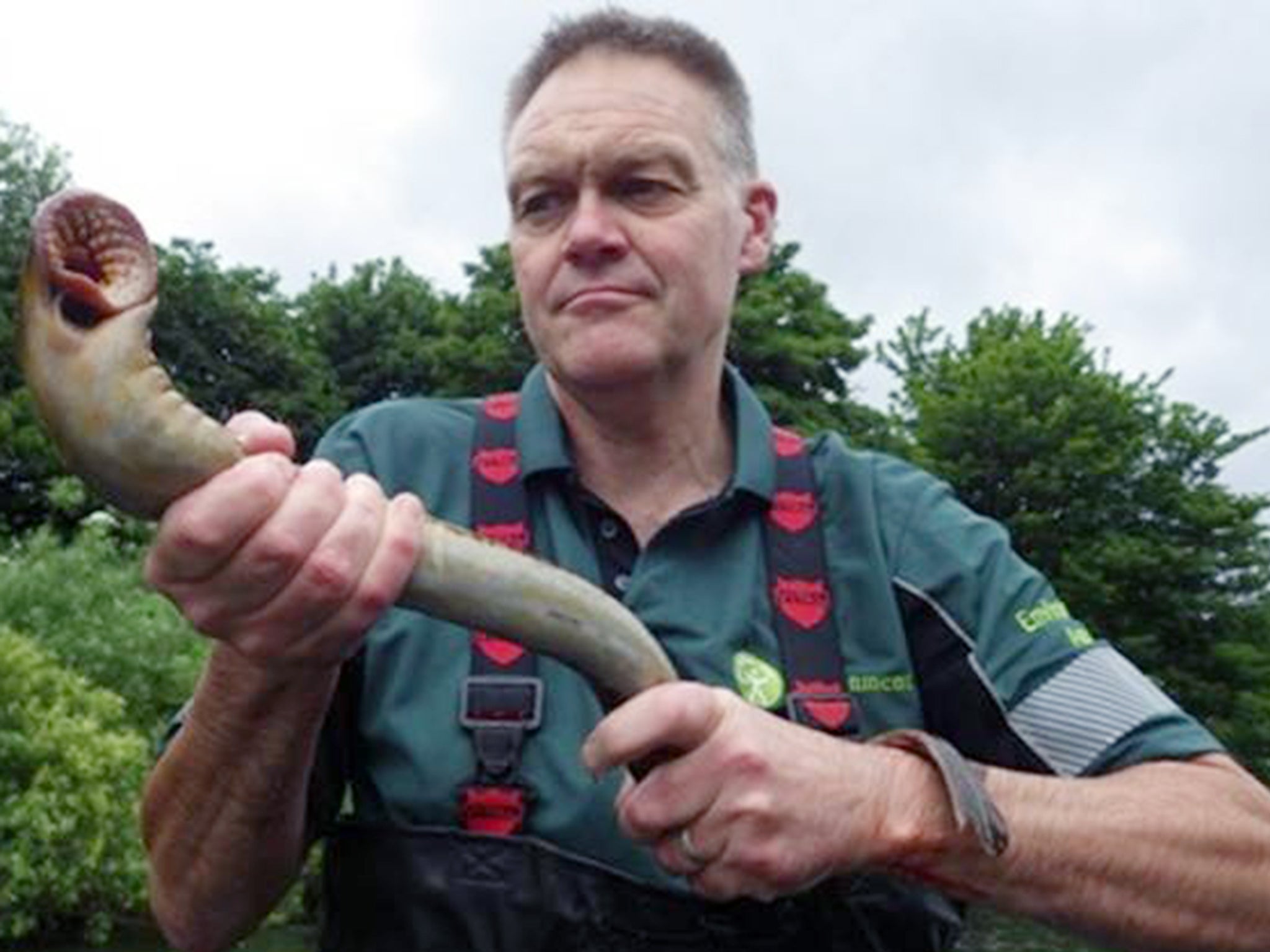Lamprey fish: Prehistoric river monster has returned to British waters
The snake-like creatures are the world's oldest living vertebrates, and were once a common sight in the country's waterways

Your support helps us to tell the story
From reproductive rights to climate change to Big Tech, The Independent is on the ground when the story is developing. Whether it's investigating the financials of Elon Musk's pro-Trump PAC or producing our latest documentary, 'The A Word', which shines a light on the American women fighting for reproductive rights, we know how important it is to parse out the facts from the messaging.
At such a critical moment in US history, we need reporters on the ground. Your donation allows us to keep sending journalists to speak to both sides of the story.
The Independent is trusted by Americans across the entire political spectrum. And unlike many other quality news outlets, we choose not to lock Americans out of our reporting and analysis with paywalls. We believe quality journalism should be available to everyone, paid for by those who can afford it.
Your support makes all the difference.A prehistoric fish has been seen in some English rivers for the first time since the 1800s in the wake of conservation work, the Environment Agency said.
Lamprey, snake-like creatures that were around 200 million years before the dinosaurs and are the world's oldest living vertebrates, were once a common sight in the country's waterways.
But the "living fossil", which has a circular disc of razor sharp teeth instead of jaws, was hit by pollution in the Industrial Revolution and the construction of mill weirs that blocked their migration.
River and sea lampreys - which were blamed for the death of King Henry I - are now endangered across Europe.
However, they are slowly returning to their old habitats in England, as rivers experience their lowest pollution levels for more than 100 years and work is carried out to remove the barriers to migration, the Environment Agency said.
This includes trialling lamprey "tiles", low-cost and low-maintenance tiles with broad cones which allow the fish to use their sucker-like mouths to anchor themselves as they squirm upwards, with encouraging initial results on the River Derwent in Yorkshire.
Environment Agency fisheries expert Simon Toms said: "For the last two hundred years, some rivers have not been capable of supporting lamprey species as a result of water quality, poor habitat and man-made barriers.

"Now that water quality has improved and some of these barriers have been removed we are seeing lampreys return to the upper reaches of rivers such as the Ouse, Trent, and Derwent, where they were absent as recently as 30 years ago.
"These are fascinating fish, living fossils, that have a special place in the history and traditions of this country, and we hope that with a helping hand from us they will be able to thrive in England's rivers once again."
Lampreys are important for processing nutrients in rivers and providing a food source for other fish and birds such as herons.
The strange-looking creature has long been regarded as a luxury food, eaten by the Romans, the Vikings and English kings and queens - with Queen Elizabeth even sent a lamprey pie from Gloucester for her diamond jubilee in 2012, though the fish was imported from the Great Lakes in North America.
King Henry I is said to have died after gorging on too many lampreys.
It has also featured in the hit TV series Game of Thrones, with Tyrion Lannister dining on lamprey pie while discussing battle plans with his sister Queen Cersei.
PA
Join our commenting forum
Join thought-provoking conversations, follow other Independent readers and see their replies
Comments